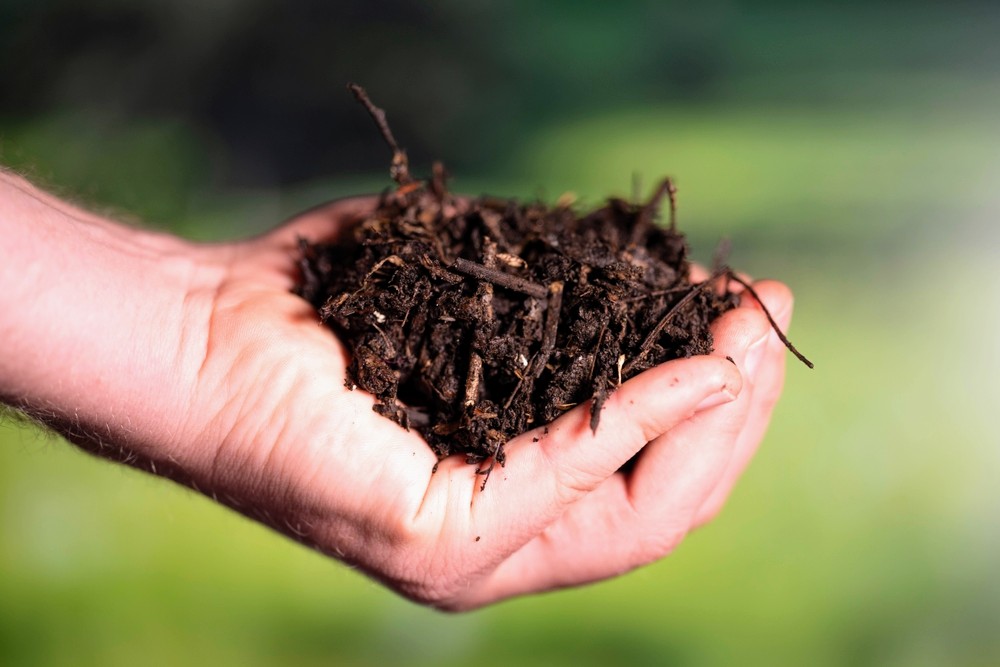
Sequestering carbon in soil is dependent upon microbes
In a crucial new study from Cornell University, scientists have discovered that the microscopic lifeforms known as microbes significantly influence the amount of carbon stored in the soil, a discovery that carries profound implications for climate change mitigation and agricultural soil health enhancement.
Microbes, it turns out, are pivotal actors in the soil carbon cycle. The study authors have determined that microbial processes, in fact, are four times more critical to carbon storage than any other process, including biomatter decomposition. This finding is particularly crucial because our planet’s soil holds three times more carbon than the atmosphere, acting as a crucial carbon sink in our fight against climate change.
Published in the journal Nature, the research introduces an innovative technique to delve into the intricacies of soil carbon dynamics. The method marries a microbial computer model with data assimilation and machine learning to meticulously analyze big data linked to the carbon cycle.
How the study was conducted
At the heart of the investigation is a measure known as microbial carbon use efficiency. This metric reveals the carbon quantity utilized by microbes for growth versus the amount used for metabolism. Carbon used for growth is sequestered by microbes within their cells and ultimately within the soil.
On the other hand, carbon used for metabolism gets released as a side product in the form of carbon dioxide, contributing to the greenhouse effect. The team concluded that microbial growth plays a more critical role than metabolism in determining the soil’s carbon storage.
Study senior author Professor Yiqi Luo emphasized the importance of the findings: “This work reveals that microbial carbon use efficiency is more important than any other factor in determining soil carbon storage.”
These newfound insights steer agricultural scientists towards exploring farming management practices that could impact microbial carbon use efficiency, thus enhancing soil health and bolstering food security.
Future studies may aim to boost soil carbon sequestration by microbes and explore how diverse types of microbes and substrates (such as sugar-rich ones) could affect soil carbon storage.
New method used to evaluate soil dynamics
Despite the two centuries of research focusing on soil carbon dynamics, previous studies mostly focused on the carbon quantity entering the soil via leaf litter and roots, and the amount lost to the air as CO2 during organic matter decomposition. “But we are the first group that can evaluate the relative importance of microbial processes versus other processes,” said Luo.
In a groundbreaking move that showcases the power of digital agriculture, Luo and his team have devised a novel method to assimilate big data into an earth system computer model using data assimilation and machine learning. The model revealed that the carbon use efficiency of microbe colonies significantly outshines other components evaluated, such as decomposition and carbon inputs.
The innovative process-based model and machine learning approach provide a new avenue for analyzing other types of big data sets.
The study was funded by several entities including the National Science Foundation, the National Key Research and Development Program of China, and the National Natural Science Foundation of China.
More about the importance of soil
Soil is not just a simple mix of minerals and dead plant material. It’s a vibrant, living ecosystem, teeming with life forms ranging from the visible, like insects and worms, to the invisible, like bacteria and fungi. Among the invisible life forms, microbes play a particularly crucial role.
Microbes are microscopic organisms that include bacteria, archaea, fungi, algae, viruses, and protozoa. Soil is one of the most diverse habitats on Earth, with estimates of microbial diversity reaching as high as one trillion species.
Microbes form a significant part of the soil food web, a complex network of organisms that transfer energy and nutrients through the soil. They’re involved in a wide array of processes that are vital to both soil health and the broader ecosystem.
One of these processes is decomposition. Microbes break down dead plant and animal material, turning organic matter into simpler compounds. This process recycles nutrients back into the soil, making them available for plant uptake.
A particularly vital role of microbes is their contribution to the carbon cycle. By decomposing organic matter, microbes convert the carbon it contains into a form that can be used by plants. They also help sequester carbon in the soil. When microbes consume organic matter, a portion of the carbon is stored within their cells. When they die, this carbon can become part of the soil organic matter, effectively storing it in the soil.
Nitrogen fixation is another key process that some soil microbes perform. Certain bacteria, particularly those that live in symbiosis with legume plants, can take nitrogen from the air and convert it into a form that plants can use. This process is a critical part of the nitrogen cycle and helps maintain soil fertility.
Moreover, soil microbes play a vital role in soil structure. Through their activities, they help create soil aggregates—small clumps of soil particles. These aggregates improve soil’s ability to retain water and air, supporting plant growth.
However, soil microbial communities can be sensitive to changes in their environment, including shifts in temperature, moisture, and pH, as well as the introduction of chemicals or pollutants. Agricultural practices such as overuse of chemical fertilizers or pesticides, or practices that lead to soil compaction or erosion, can harm these communities and disrupt the important processes they carry out.
In short, while they might be out of sight, soil microbes are critical for soil health, plant growth, and global carbon and nitrogen cycles. Understanding and preserving these tiny soil inhabitants is crucial for sustainable agriculture and a healthy planet.
—-
Check us out on EarthSnap, a free app brought to you by Eric Ralls and Earth.com.













